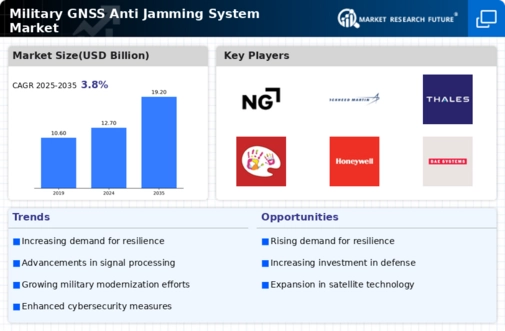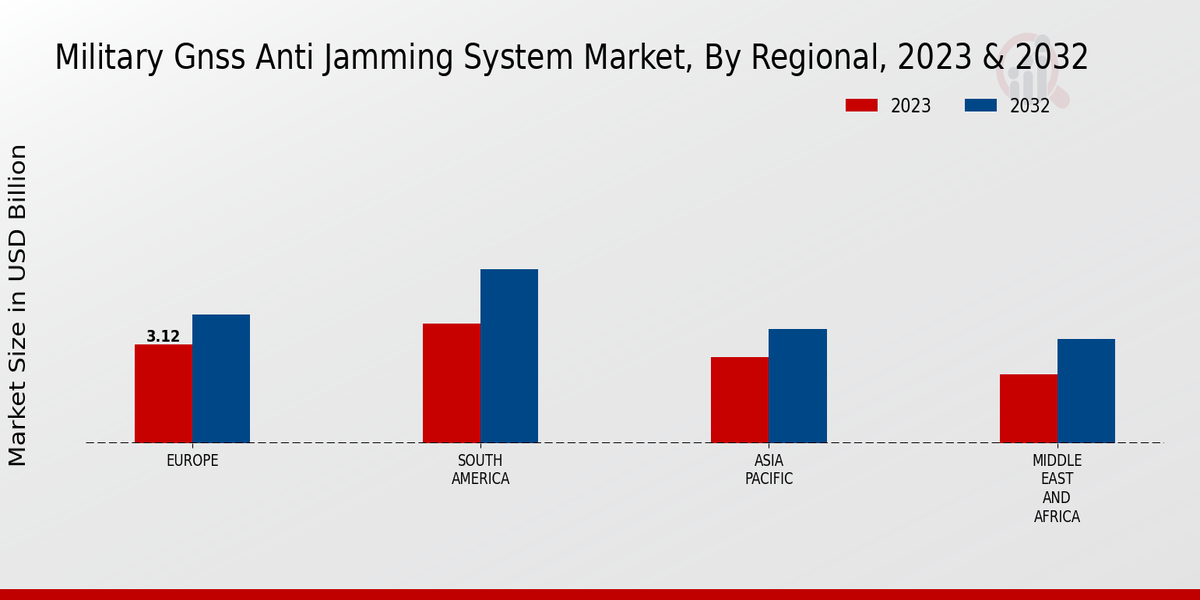Military Gnss Anti Jamming System Market Summary
The Global Military GNSS Anti Jamming System Market is projected to grow from 12.74 USD Billion in 2024 to 19.14 USD Billion by 2035.
Key Market Trends & Highlights
Military GNSS Anti Jamming System Key Trends and Highlights
- The market is expected to experience a compound annual growth rate (CAGR) of 3.78 percent from 2025 to 2035.
- By 2035, the market valuation is anticipated to reach 19.2 USD Billion, indicating robust growth potential.
- in 2024, the market is valued at 12.74 USD Billion, reflecting the increasing demand for advanced navigation systems.
- Growing adoption of GNSS anti jamming systems due to rising concerns over national security is a major market driver.
Market Size & Forecast
| 2024 Market Size | 12.74 (USD Billion) |
| 2035 Market Size | 19.14 (USD Billion) |
| CAGR (2025-2035) | 3.77% |
Major Players
Northrop Grumman, Lockheed Martin, L3Harris Technologies, Thales, Leonardo, Honeywell, BAE Systems, SAAB, Airbus Defence and Space, Aselsan, Collins Aerospace, Spirent Communications, Rohde Schwarz, Garmin, Raytheon Technologies
























Leave a Comment